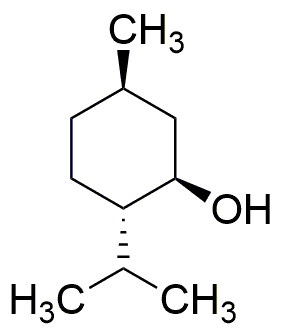L-Menthol is widely utilized in research focused on:
- Flavoring and Fragrance Industry: Commonly used as a flavoring agent in food and beverages, L-Menthol provides a refreshing minty taste that enhances consumer appeal.
- Pharmaceuticals: Its cooling and soothing properties make it a key ingredient in topical analgesics and cough suppressants, helping to relieve minor aches and respiratory discomfort.
- Cosmetics: Used in skincare and personal care products, L-Menthol offers a cooling sensation that can enhance the user experience in products like lotions and creams.
- Aromatherapy: Known for its calming effects, L-Menthol is often incorporated into essential oils and diffusers to promote relaxation and mental clarity.
- Industrial Applications: Employed in the production of mentholated products, it serves as a solvent and stabilizer in various chemical processes, providing efficiency and effectiveness in manufacturing.
General Information
Properties
Safety and Regulations
Applications
L-Menthol is widely utilized in research focused on:
- Flavoring and Fragrance Industry: Commonly used as a flavoring agent in food and beverages, L-Menthol provides a refreshing minty taste that enhances consumer appeal.
- Pharmaceuticals: Its cooling and soothing properties make it a key ingredient in topical analgesics and cough suppressants, helping to relieve minor aches and respiratory discomfort.
- Cosmetics: Used in skincare and personal care products, L-Menthol offers a cooling sensation that can enhance the user experience in products like lotions and creams.
- Aromatherapy: Known for its calming effects, L-Menthol is often incorporated into essential oils and diffusers to promote relaxation and mental clarity.
- Industrial Applications: Employed in the production of mentholated products, it serves as a solvent and stabilizer in various chemical processes, providing efficiency and effectiveness in manufacturing.
Documents
Safety Data Sheets (SDS)
The SDS provides comprehensive safety information on handling, storage, and disposal of the product.
Product Specification (PS)
The PS provides a comprehensive breakdown of the product’s properties, including chemical composition, physical state, purity, and storage requirements. It also details acceptable quality ranges and the product's intended applications.
Certificates of Analysis (COA)
Search for Certificates of Analysis (COA) by entering the products Lot Number. Lot and Batch Numbers can be found on a product’s label following the words ‘Lot’ or ‘Batch’.
*Catalog Number
*Lot Number
Certificates Of Origin (COO)
This COO confirms the country where the product was manufactured, and also details the materials and components used in it and whether it is derived from natural, synthetic, or other specific sources. This certificate may be required for customs, trade, and regulatory compliance.
*Catalog Number
*Lot Number
Safety Data Sheets (SDS)
The SDS provides comprehensive safety information on handling, storage, and disposal of the product.
DownloadProduct Specification (PS)
The PS provides a comprehensive breakdown of the product’s properties, including chemical composition, physical state, purity, and storage requirements. It also details acceptable quality ranges and the product's intended applications.
DownloadCertificates of Analysis (COA)
Search for Certificates of Analysis (COA) by entering the products Lot Number. Lot and Batch Numbers can be found on a product’s label following the words ‘Lot’ or ‘Batch’.
*Catalog Number
*Lot Number
Certificates Of Origin (COO)
This COO confirms the country where the product was manufactured, and also details the materials and components used in it and whether it is derived from natural, synthetic, or other specific sources. This certificate may be required for customs, trade, and regulatory compliance.


